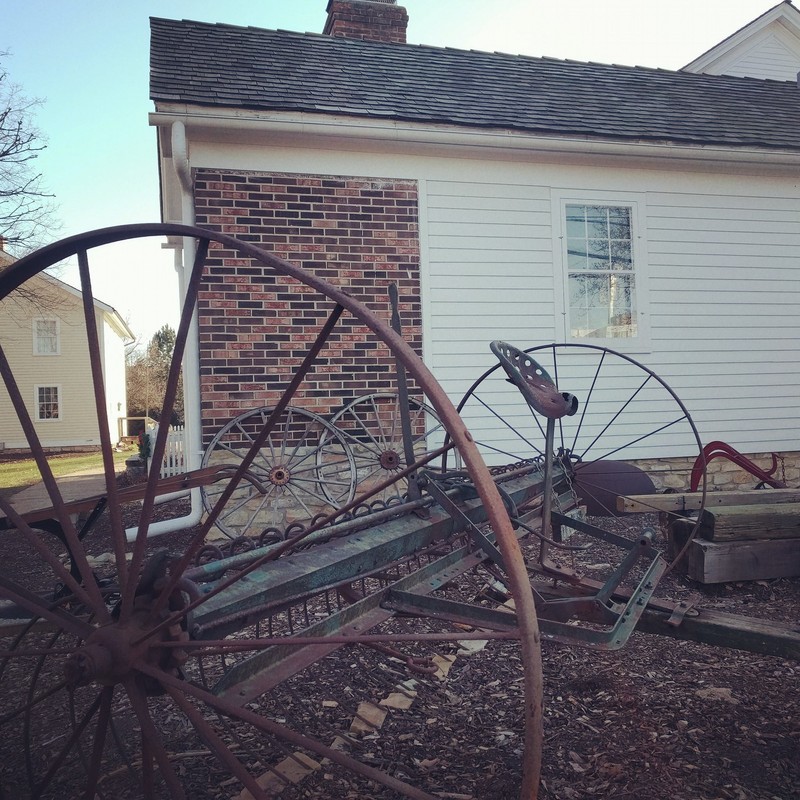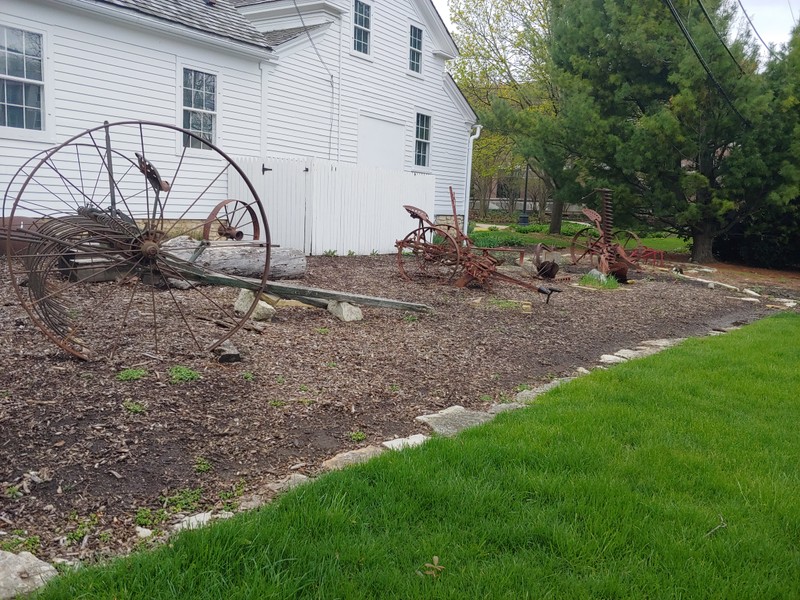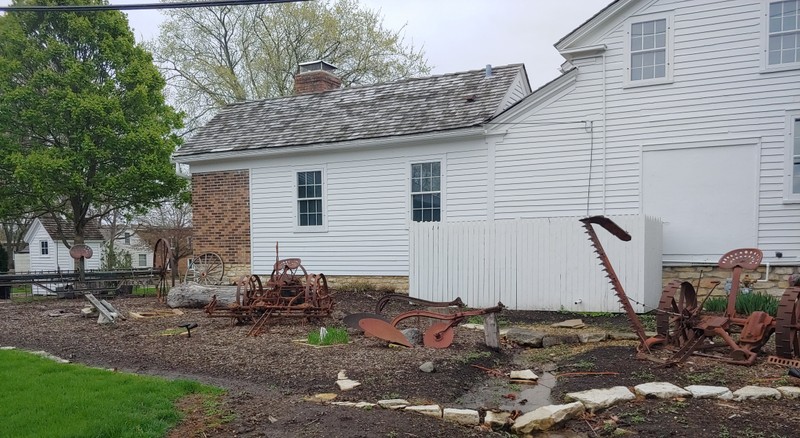Lisle's Agricultural Roots Display
Introduction
Text-to-speech Audio
Images
"Lisle: A Farm Town" outdoor display. Stop by to see what our volunteers have been working on!

Volunteers plant native crop plants as well as some that were brought by European immigrants in the 1800s

"Lisle: A Farm Town" outdoor display includes horse-drawn farm implements that were used in Lisle.

Backstory and Context
Text-to-speech Audio
In many ways, Lisle was shaped by farming. Agriculture has been a key industry in Lisle for most of its history. From the days of its earliest European settlers, Lisle’s residents have grown food, raised animals, and benefited from the products of that labor.
In the 1830s, farming in Lisle was mainly for living (“Subsistence”): People ran small farms to feed their family. They worked the land to stay alive, thinking more about their own survival than making a profit. This changed with the construction of the Plank Road, which allowed farmers to ship their produce to the towns around Lisle, including Chicago.
The focus for many farmers moved from “Subsistence” to “Commercial” farming: Lisle families could earn money from their farm lands. When the railroad was built through town in 1864, Lisle’s farmers could ship more produce and farm animals on the larger train cars. Once paved roads, cars, and trucks became more common and affordable, farmers chose to use these vehicles to send farm products to surrounding communities. They could drive their trucks any time they wanted and did not have to rely on the train’s schedule.
Changes in transportation caused Lisle’s town layout and “main street” to change over time, too. The first “main street” in Lisle was the Plank Road (currently Ogden Avenue), with farms created to the north and south of it. Later, shops opened on today’s Front Street because most people visited the Lisle Depot every day to ship and sell their farm products. Businesses started opening on today’s Main Street in the 1930s, just after cars and trucks became more common for shipping items.
"Lisle: A Farm Town" is a rotating outdoor display on the west side of the Netzley/Yender House managed by volunteers from the Lisle Heritage Society and MLSP staff. Please walk through this display to see what’s growing and look at the farm equipment up close.
Sources
Resources collected and researched by The Museums at Lisle Station Park (MLSP) staff and volunteers
MLSP
MLSP
MLSP
